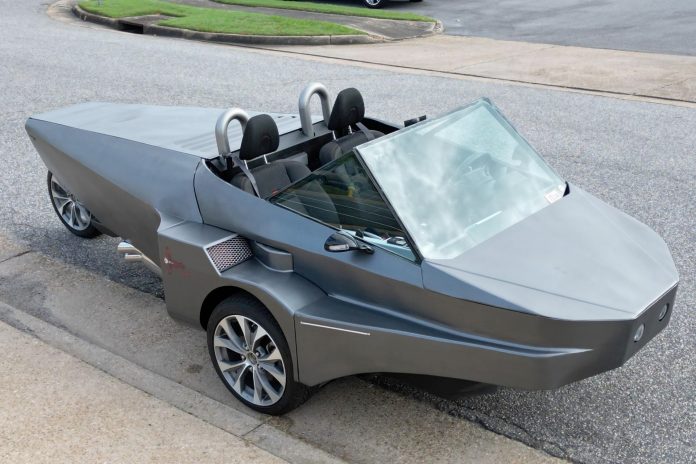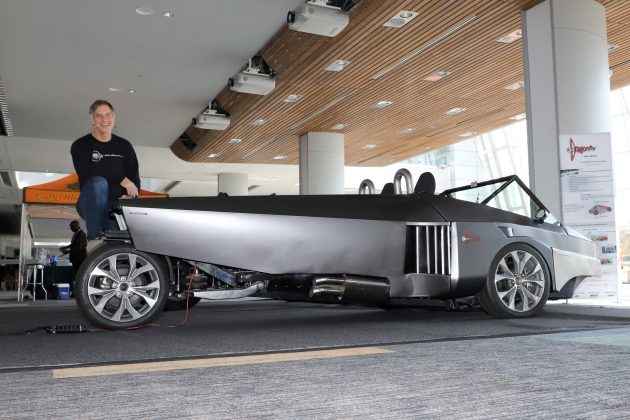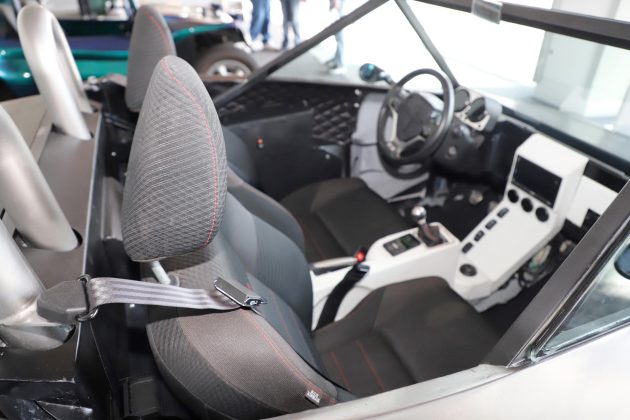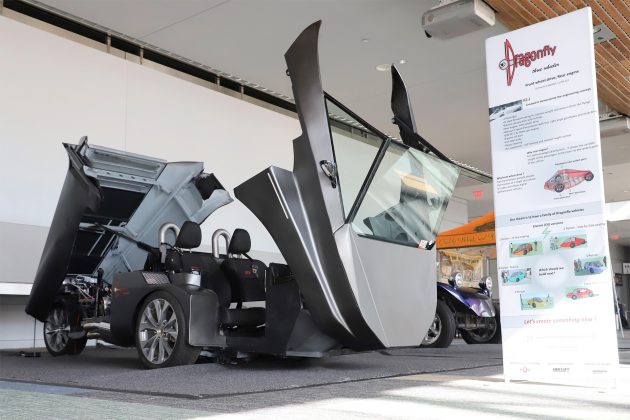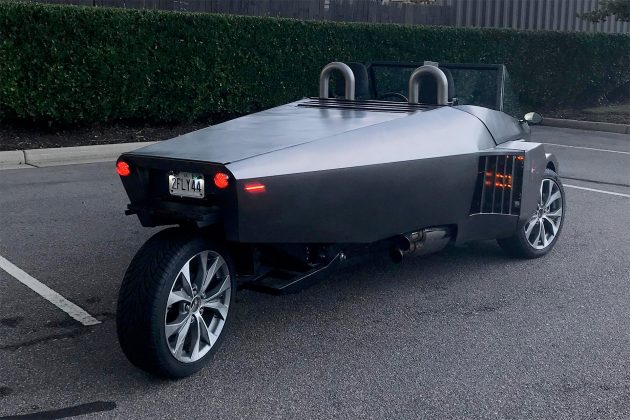The Dragonfly Three Wheeler takes a fresh approach to the design of three-wheeled vehicles. Led by American mechanical engineer Greg Kunsch, who previously worked on aircraft carriers and nuclear submarines at Northrop Grumman, the project delivers a novel mid/rear-engine, front-wheel-drive setup that promises enhanced traction and stability.
Currently in its prototype phase, the Dragonfly is a road-legal autocycle constructed with a full-steel body in the tadpole configuration, featuring two wheels in the front and one at the rear. This arrangement places the occupants in a side-by-side seating position between the front wheels, lowering the center of gravity to improve stability during high-speed cornering.
Unlike most tadpole three-wheelers, which typically rely on rear-wheel drive for simplicity and cost-effectiveness, the Dragonfly powers its front wheels. According to Kunsch, this setup “doubles the traction,” a key advantage for vehicles with higher-powered engines. The Dragonfly is equipped with a 200-hp, 2.4-liter DOHC gas engine, placing it in a performance category where improved handling and stability are essential. The engine is positioned toward the rear but not entirely at the back, ensuring better weight distribution and enhancing overall drivability.
Kunsch explains the choice of front-wheel drive in the Dragonfly: “Most tadpoles are rear-wheel-drive simply because that makes them easier to engineer and cheaper to build.” However, the innovative drivetrain in the Dragonfly sets it apart, addressing both performance and practicality in a unique way.
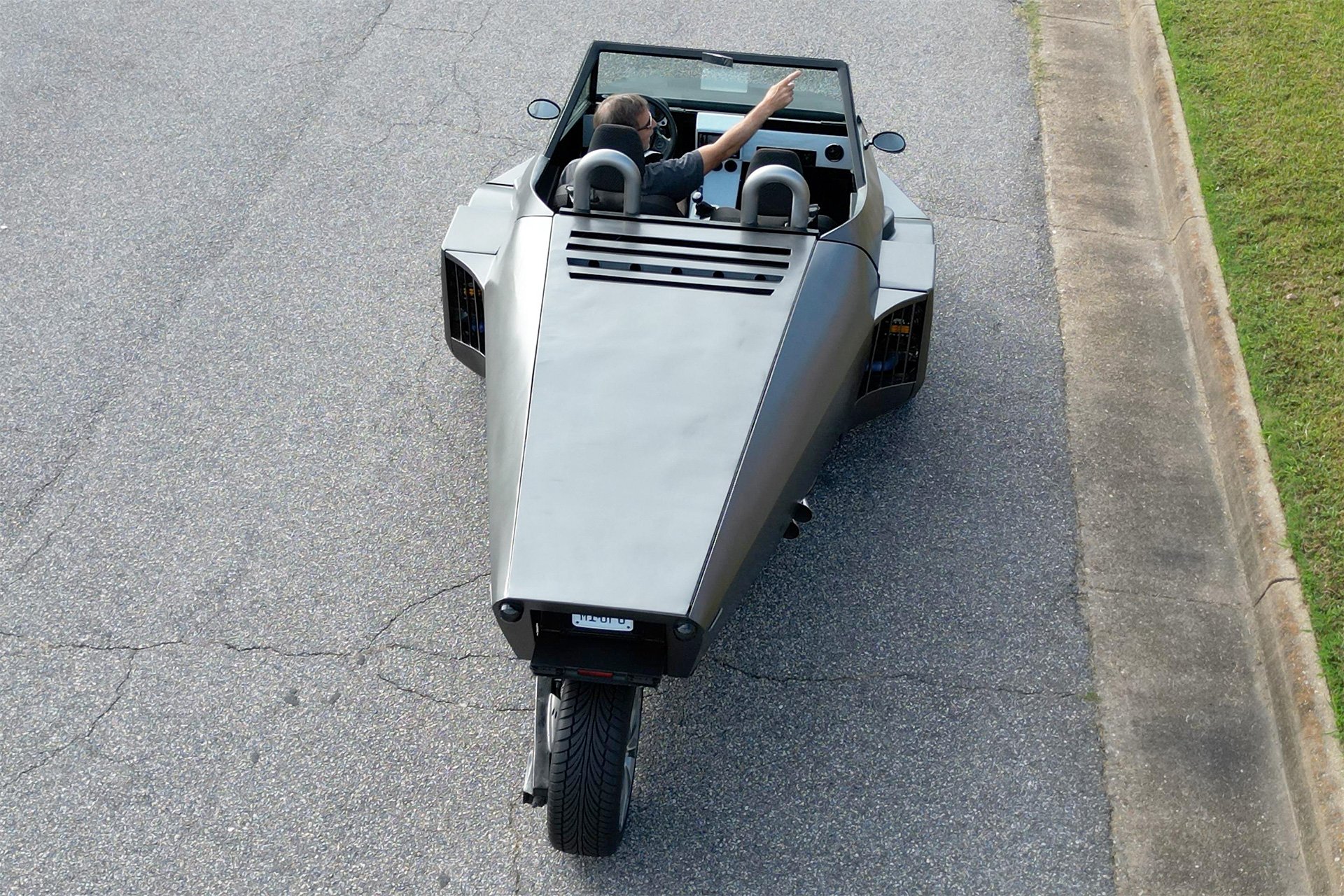
The Dragonfly also includes several notable features, such as a manual 5-speed transmission, an electrically raised front canopy instead of traditional doors, a removable roof, 8-point roll bars for safety, power steering, and a self-leveling adjustable-height air suspension system. These elements make the vehicle functional and versatile, suitable for various driving conditions.
The prototype’s sharp-lined, somewhat un-aerodynamic design stems from a focus on keeping costs down at this stage. Kunsch has also announced plans for an electric version, potentially expanding to an entire family of electric vehicles. However, he has ruled out hub motors due to concerns about unsprung weight and their limited proven use at scale. “These motors are 40-ish pounds [18 kg], and that means both a very harsh ride and handling of impacts,” he notes.
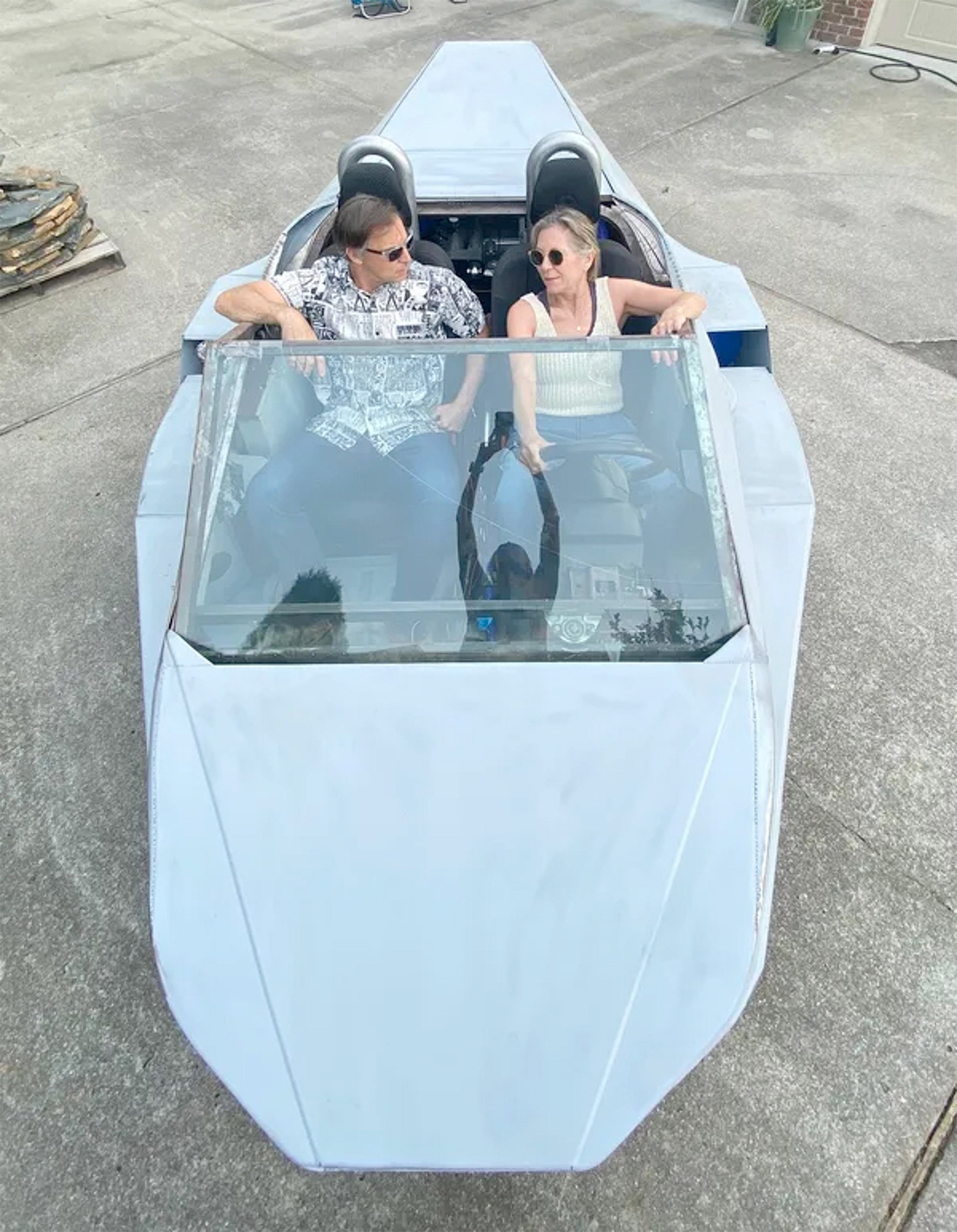
While the Dragonfly Three Wheeler will not be sold directly to consumers, Kunsch intends to license the technology to manufacturers interested in incorporating its innovative features. Details on how to connect with the Dragonfly team are available on the vehicle’s official website.
Source: Dragonfly

